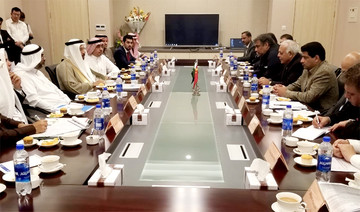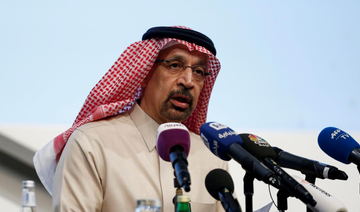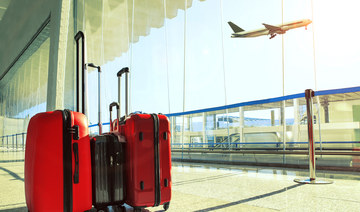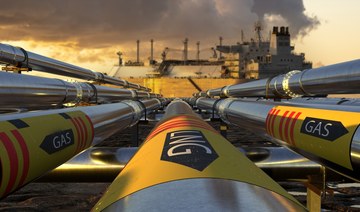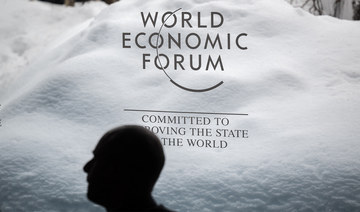SINGAPORE: Oil prices fell by almost 1 percent on Monday, with Brent crude slipping below $60 per barrel, after Chinese data showed weakening imports and exports in the world’s biggest trading nation and second-largest crude oil consumer.
International Brent crude oil futures were at $59.91 per barrel at 0403 GMT, down 57 cents, or 0.9 percent from their last close.
US West Texas Intermediate (WTI) crude futures were down 47 cents, or 0.9 percent, at $51.12 a barrel.
China’s December overall exports fell by 4.4 percent from a year earlier, the biggest monthly drop in two years, official data showed on Monday, pointing to further weakening in the world’s second-largest economy. Imports last month also contracted, falling 7.6 percent, the biggest decline since July 2016.
“Crude futures were back in the red as trading began for a fresh week in Asia, in tandem with most of the region’s stock markets ... (as) China early Monday reported $351.76 billion trade surplus in dollar terms for 2018, the lowest since 2013,” said energy consultant Vandana Hari of Vanda Insights in a note on Monday.
The weak trade figures confirm a raft of indicators that have been pointing to an economic slowdown since the second half of 2018.
“Producer price inflation has decelerated for six consecutive months, adding to other signs of cooling industrial activity (in China) amid weakening global demand,” rating agency Moody’s said in a note.
Traders said the data pulled down crude oil futures and Asian stock markets alike, which had both posted modest gains earlier on Monday.
Economic research firm TS Lombard said oil prices were capped as “the world economy is now slowing ... limiting the scope for positive surprises in oil demand and hampering inventory reduction.”
Ole Hansen, head of commodity strategy at Denmark’s Saxo Bank, said “the deterioration seen recently in forward-looking economic data from the US to Europe and China” meant that the upside for crude oil futures was likely limited to $64 per barrel for Brent and for $55 for WTI.
Despite the weak Chinese trade data, the country’s oil imports remained sky-high in December at 10.31 million barrels per day (bpd), holding above the 10 million bpd mark for the second month in a row, on stockbuilding by small independent refiners who were trying to use up annual quotas.
Amid this strong demand from the world’s biggest oil importer, the Organization of the Petroleum Exporting Countries (OPEC) and some non-OPEC allies, including Russia, have been cutting supply since late 2018, providing crude prices with some support.
In the United States, drillers cut four oil rigs in the week to Jan. 11, bringing the total count down to 873 energy services firm Baker Hughes said in a weekly report on Friday.
Oil slides on China trade slump, but crude imports remain high
Oil slides on China trade slump, but crude imports remain high
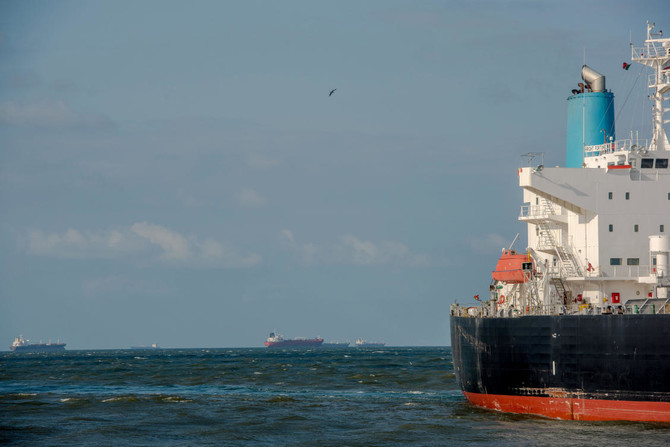
- China’s December overall exports fell by 4.4 percent from a year earlier, the biggest monthly drop in two years
- In the US, drillers cut four oil rigs in the week to January 11
Saudi Arabia’s aviation growth plays pivotal role in economic development: GACA president
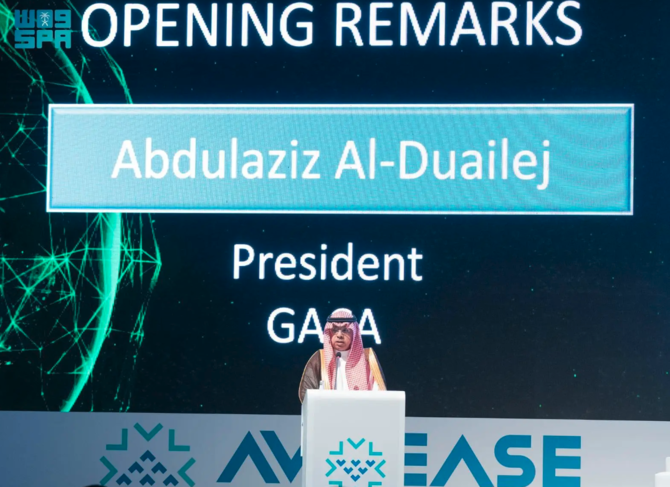
RIYADH: Growth in air traffic, heightened investment interest, and a comprehensive strategy are driving Saudi Arabia’s aviation sector expansion, according to a top official.
Abdulaziz Al-Duailej, president of the Saudi General Authority of Civil Aviation, highlighted the sector’s pivotal role in economic growth and sustainable development during his speech at the Airlines Economic Growth Frontiers conference in Riyadh.
Al-Duailej emphasized that Saudi Arabia is significantly advancing its civil aviation sector under Vision 2030 and the National Aviation Strategy, according to a report by the Saudi Press Agency.
The initiative aims to cement the Kingdom’s leadership in Middle Eastern civil aviation by enabling investments worth $100 billion by 2030 and leveraging private sector resources and expertise.
The strategy also outlines a holistic plan to upgrade airport services, airlines, and associated facilities, including cargo and logistics.
It aims to enhance the Kingdom’s global air connectivity through 29 airports, significantly grow passenger numbers, and establish Saudi Arabia as a premier center for cargo and logistics by 2030.
Al-Duailej pointed out the initiative’s focus on enabling competition and efficiency to stimulate investment and growth, overseeing its implementation, and ensuring compliance with regulations that provide safety, security, and sustainability.
He also highlighted the significant progress made in the aviation sector’s infrastructure and overall performance, driven by several undertakings launched by GACA.
These initiatives include massive investments that offer unprecedented opportunities for global aviation investors and operators.
He also mentioned a partnership between the public and private sectors to triple Abha International Airport’s capacity to accommodate 10 million passengers by 2030. The airport has already received interest from 100 companies to participate in this project.
Among the undertakings is the establishment of Riyadh Air, the launch of the master plan for King Salman International Airport in Riyadh, which aims to serve nearly 120 million passengers by 2030, and the opening of the Red Sea International Airport.
Moreover, Al-Duailej highlighted the launch of the National Air Connectivity Program to support the tourism and travel sectors in the Kingdom.
He also discussed significant investments in renewable energy and advanced air transport involving Saudia Airlines and NEOM, alongside substantial expansions by The Helicopter Co.
These efforts align with broader regulations promoting environmental awareness, ensuring balanced and sustainable growth for the aviation sector in the Kingdom in the long term.
Regarding passenger traffic, Al-Duailej revealed that the Kingdom saw a 26 percent increase last year, reaching a record 112 million travelers and surpassing 2019 figures by 8 percent.
In the first two months of this year alone, air traffic increased by 20 percent compared to the same period in 2023.
Another point of emphasis was the increase in air connectivity to nearly 150 destinations, with low-cost airlines driving growth between 2019 and 2023, thereby doubling their market share both domestically and internationally.
The Airlines Economic Growth Frontiers conference, hosted by AVILEASE, a subsidiary of the Public Investment Fund, aims to highlight opportunities within the civil aviation sector.
The event, held at the Four Seasons in Riyadh from April 22-23, saw the presence of the vice presidents of the GACA, representatives of the PIF, and numerous officials and industry stakeholders from around the world.
TotalEnergies, OQ to launch $1.6bn LNG Bunkering project in Oman
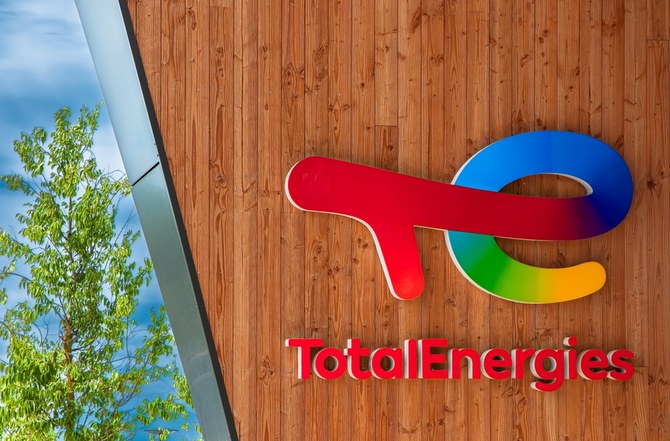
RIYADH: Oman’s Sohar Port is set to house a new $1.6 billion liquefied natural gas bunkering plant following an agreement inked between OQ and TotalEnergies.
Bunkering involves transferring LNG to a ship for use as fuel, offering a cleaner alternative compared to traditional methods such as marine gas oil and heavy fuel oil.
TotalEnergies will provide 80 percent of the investment, with OQ contributing the remaining 20 percent through their joint venture, Marsa Liquefied Natural Gas LLC.
The Marsa LNG project, the first of its kind in the Middle East, is poised to have significant economic implications. It’s expected to bolster Oman’s treasury revenues and enhance local value through collaborative local investments.
Patrick Pouyanne, chairman and CEO of TotalEnergies, said: “We are proud to open a new chapter in our history in the Sultanate of Oman with the launch of the Marsa LNG project, together with our partner OQ, demonstrating our long-term commitment to the country.”
He explained that the innovative project illustrates their pioneer spirit and showcases the relevance of their integrated multi-energy strategy, with the ambition of being a responsible player in the energy transition.
“By paving the way for the next generation of very low emission LNG plants, Marsa LNG is contributing to making gas a long-term transition energy,” Pouyanne added.
The plant, powered entirely by solar energy, is expected to contribute to the reduction of carbon emissions and the shipping industry’s overall carbon footprint. Notably, it is projected to emit less than 3 kg of carbon dioxide per oil equivalent barrel.
“The Marsa LNG project is one of the many initiatives that reflect Oman’s goal of achieving carbon neutrality by 2050,” Minister of Energy and Minerals Salim Al-Aufi said.
Minister affirms Riyadh as global solutions hub ahead of special meeting of World Economic Forum
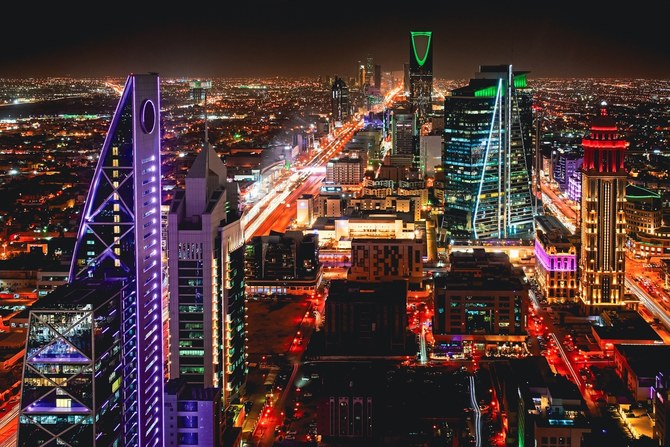
RIYADH: Riyadh has emerged as a beacon of “thought leadership, action, and solutions,” stated one of Saudi Arabia’s top officials as the Kingdom’s capital prepares to host the World Economic Forum.
Faisal Al-Ibrahim, the minister of economy and planning, made the comments ahead of the summit on global collaboration, growth, and energy for development, slated for April 28 to 29, which aims to empower leaders from both public and private sectors to tackle mutual global challenges.
According to the WEF website, the meeting will also advance key forum initiatives in the region and beyond as it aims to bridge the growing North-South global divide, which has further widened on issues such as emerging economic policies, the energy transition and geopolitical shocks.
“The Crown Prince’s patronage of the World Economic Forum Special Meeting in Riyadh is a testament to our leadership’s determination to convene the world to take action and expand global collaboration on the critical topics of our time,” said Al-Ibrahim in a post on X.
He welcomed global leaders to this pivotal moment for social, economic, and human development, urging them to “build bridges toward a secure, stable and sustainable future.”
Saudi Arabia’s Diriyah Co. unveils its mixed-use commercial office and retail offering Zallal
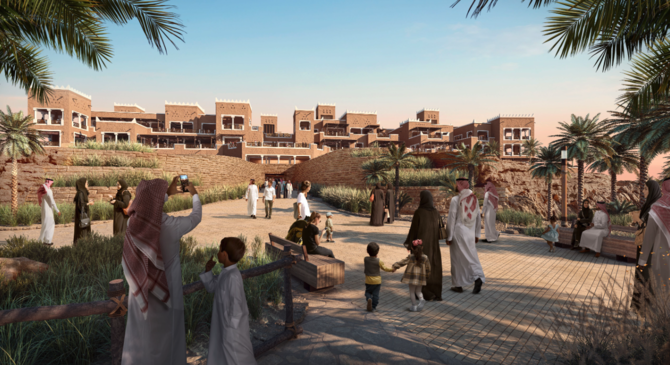
RIYADH: Saudi Arabia’s Diriyah Co. has shared plans for its inaugural mixed-use commercial office and retail development Zallal, set to launch in the Bujairi district during the first half of 2025.
This project will feature two low-rise office buildings with a combined leasable space of around 6,000 sq. m. Additionally, there will be 12 mixed retail and food and beverage outlets spread across about 8,000 sq. m.
Located next to the popular Bujairi Terrace, Zallal will benefit from proximity to a venue that attracts thousands of visitors daily.
The development is also located close to the recently completed Diriyah Art Futures and the soon-to-open Bab Samhan Hotel.
Jerry Inzerillo, group CEO of Diriyah Co, said: “We have been delighted with the hugely positive reception that Zallal has had from the commercial sector, and we are in advanced negotiations with international and local companies eager to benefit from the central location in the heart of Diriyah and the diverse range of accessible retail, F&B and office space available.”
He added: “With construction well underway, Zallal maintains the exciting momentum at Diriyah, and when open, will benefit from the thousands of daily visitors to Bujairi Terrace becoming the latest completed precinct in our rapidly developing masterplan.”
The company stated that prospective tenants have responded very favorably to the project, and advanced leasing negotiations are underway with several businesses and organizations.
Zallal will provide direct access to Wadi Hanifah and offer views of the UNESCO World Heritage site of At-Turaif from its position on the outskirts of the Saudi capital.
The ongoing construction work aims to integrate design elements that reflect Diriyah’s nearly 300-year history of traditional Najdi architecture.
Furthermore, Zallal will feature an underground parking facility offering direct access to Wadi Hanifah, Al Imam Abdulaziz bin Muhammad bin Saud Road, and public transportation options.
The facility is designed with convenience in mind, featuring designated coach drop-off points for tourists and visitors. This ensures a seamless transition to the pedestrian-friendly environment upon arrival.
Among the companies already involved in leasing negotiations are well-known international brands seeking to establish their presence in Saudi Arabia for the first time, the company said. Additionally, local companies and emerging Saudi concepts are also part of the leasing discussions.
In February, Diriyah Co. unveiled its plans to initiate construction on 11 new assets by the end of 2024, with the signing of two agreements on the sidelines of the Public Investment Fund’s Private Sector Forum.
Mitsui says no decision yet on ADNOC LNG project tie-up after Nikkei report

TOKYO: Japan’s Mitsui & Co. said on Tuesday nothing has been decided on a liquefied natural gas project in the UAE, after the Nikkei reported it was teaming up with Abu Dhabi National Oil Co. on it.
The Nikkei reported ADNOC would have a stake of around 60 percent and Mitsui 10 percent of the $7 billion LNG project at Ruwais, adding Mitsui’s investment is estimated to be several tens of billions of yen.
Other oil majors Shell, BP and Total Energies are also expected to invest, the report said.
A Mitsui spokesperson said nothing had yet been decided when asked about the report. ADNOC, BP and Shell declined to comment. TotalEnergies did not immediately respond to a request for comment.
ADNOC has big ambitions in gas and LNG, which along with renewable energy and petrochemicals, it sees as pillars for its future growth.
Demand for natural gas soared as Europe scrambled to secure supplies to replace Russian gas in the wake of Moscow’s invasion of Ukraine last year.
The planned Ruwais LNG project, to the west of Abu Dhabi city, will help ADNOC reach its goal of doubling its LNG production capacity. It currently has liquefaction capacity of about 6 million metric tons per annum at its Das Island facility.
The Ruwais plant will have electric-powered processing facilities and run on renewable and nuclear grid power, making it one of the lowest carbon intensity LNG facilities globally, ADNOC has said. It will have two 4.8 mtpa LNG liquefaction trains when completed.
ADNOC said in March it had issued a limited notice to proceed for early engineering, procurement and construction on the Ruwais LNG project to a consortium led by Technip Energies and including JGC Corporation and National Petroleum Construction Co. A final investment decision is expected this year.
ADNOC has since last year signed several LNG supply deals, including two for LNG from the Ruwais project, expected to begin commercial operations in 2028.
ADNOC has eyed acquisitions of foreign companies in part to help boost its gas portfolio.


